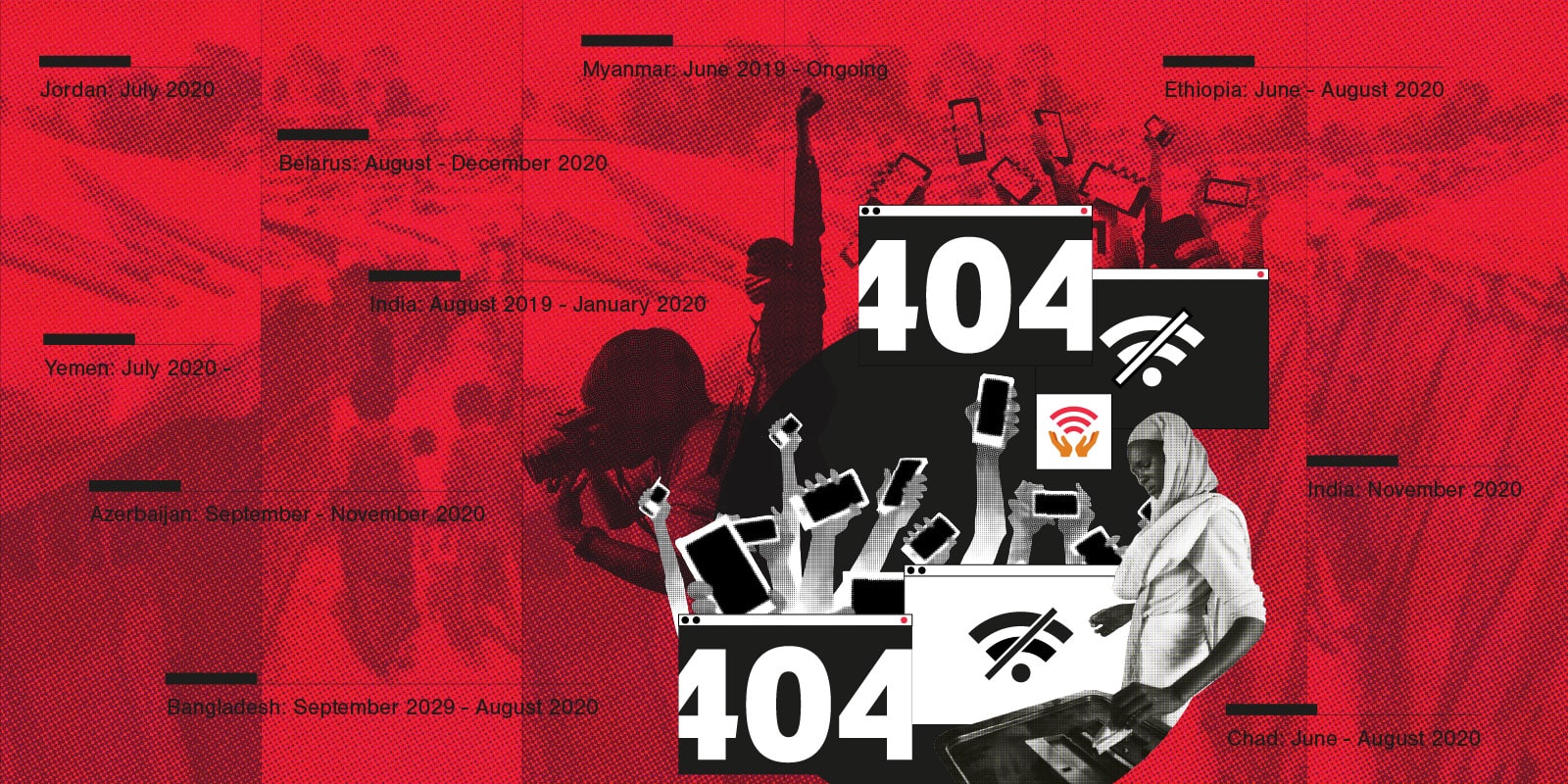From Belarus to Bangladesh, authorities in 29 countries shut down or interfered with the internet at least 155 times in 2020. India shut down the internet more than any other nation — a total of at least 109 times. On a day-to-day basis, this prevented millions of people from working, studying, and communicating to their full potential. At its most extreme, this crippled access to life-saving information, and provided cover for shocking human rights abuses.
Access Now’s new report, Shattered dreams and lost opportunities: a year in the fight to #KeepItOn, explores where, how, and why, the internet was deliberately switched off in 2020, and the long-lasting repercussions for communities across the globe. Read the full report, and global snapshot.
“It is alarming that the world’s largest democracy — India — continues to be the biggest instigator of internet shutdowns in the world,” said Raman Jit Singh Chima, Senior International Counsel and Asia Pacific Policy Director at Access Now. “We’ve lived through targeted blackouts in Jammu and Kashmir for years, and watched shutdowns spread to every part of the country, and increasingly being used to target peaceful protestors and hide the actions of government authorities. People in India live in precarity. This is not on par with international human rights standards, nor is it in line with the progressive facade of the Union Government’s Digital India mission.”
Government-mandated internet shutdowns are dangerous, and when implemented during a pandemic, protest, or conflict, can be deadly — as the world witnessed in India, among other countries, last year and this.
“Shutting down the internet during a global health crisis is incredibly unsafe,” said Felicia Anthonio, Campaigner and #KeepItOn Lead at Access Now. “But, with no regard for human life, this is what governments did in 2020 — again, and again, and again. As our new report, Shattered dreams and lost opportunities: a year in the fight to #KeepItOn, dissects, there is no fathomable excuse to justify these abhorrent government actions.”
The report’s key findings from 2020 include:
- There were 28 complete internet shutdowns where authorities disabled both broadband and mobile connectivity;
- India shut down the internet at least 109 times;
- Shutdowns provided cover for human rights violations in at least 17 incidents, including against protesters in Belarus disputing election results, and in Ethiopia’s Tigray where an unknown number of people have been killed in civil unrest;
- Throttling — the deliberate slowing down of the internet — was used to target marginalized groups, such as Rohingya communities in Myanmar’s Rakhine and Chin states, for almost half of 2020; and
- Virtual Private Networks (VPNs) were blocked in India’s Jammu and Kashmir regions.
In 2020, internet shutdowns were implemented in: Africa: Burundi, Chad, Ethiopia, Guinea, Kenya, Mali, Sudan, Tanzania, Togo, and Uganda; Asia-Pacific: Bangladesh, Kyrgyzstan, India, Myanmar, Pakistan, and Vietnam; Latin America and the Caribbean: Cuba, Ecuador, and Venezuela; Europe: Belarus and Azerbaijan; and the Middle East and North Africa: Algeria, Egypt, Iran, Iraq, Jordan, Syria, Turkey, and Yemen.
Read Shattered dreams and lost opportunities: a year in the fight to #KeepItOn, and the global snapshot.
